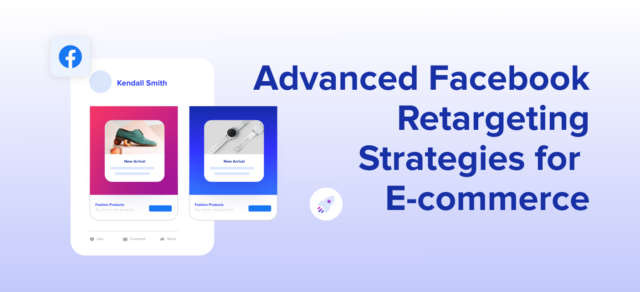In the competitive world of e-commerce, capturing a customer’s attention is just the beginning. Many visitors to your online store may leave without making a purchase, often due to distractions, uncertainties, or simply needing more time to decide. This is where retargeting ads come into play. Retargeting is a powerful advertising strategy that allows you to reconnect with potential customers who have previously interacted with your brand. In this blog, we’ll explore how to effectively use retargeting ads to increase e-commerce sales.

Table of Contents
ToggleWhat Are Retargeting Ads?
Retargeting ads, also known as remarketing ads, are a form of online advertising that targets users who have previously visited your website or engaged with your brand. These ads can appear on various platforms, including social media, search engines, and other websites that are part of the Google Display Network. The primary goal of retargeting ads is to remind users of their initial interest and encourage them to return to your site to complete their purchase.
Why Retargeting Ads Matter for E-Commerce
1. Higher Conversion Rates
Retargeting ads have significantly higher conversion rates compared to standard display ads. Since these ads target users who have already expressed interest in your products, they are more likely to convert. According to studies, retargeting can lead to a conversion rate increase of 10 times or more.
2. Cost-Effective Marketing
Retargeting ads often have a lower cost per click (CPC) than traditional ads. By focusing your efforts on users who are already familiar with your brand, you can maximize your return on investment (ROI) and make the most of your advertising budget.
3. Brand Recall and Engagement
Retargeting keeps your brand top-of-mind for potential customers. By consistently showing your ads to users who have previously visited your site, you enhance brand recall, making it more likely that they will choose your products when they are ready to buy.
4. Personalization Opportunities
Retargeting ads allow for a high level of personalization. You can tailor ads based on users’ previous interactions with your site, such as the specific products they viewed or added to their cart, creating a more relevant experience that resonates with potential customers.
Steps to Implement Effective Retargeting Ads
1. Set Up a Retargeting Pixel
To get started with retargeting, you need to implement a tracking pixel on your website. This pixel is a small snippet of code provided by your advertising platform (like Google Ads or Facebook Ads) that tracks visitors to your site. It collects data on user behavior, allowing you to create custom audiences for your retargeting campaigns.
2. Define Your Audience Segments
Segmenting your audience is crucial for effective retargeting. Consider creating different segments based on user behavior, such as:
- Website Visitors: Target users who have visited your website but didn’t make a purchase.
- Cart Abandoners: Focus on users who added products to their cart but left without completing the transaction.
- Previous Customers: Retarget customers who have purchased in the past to encourage repeat purchases.
3. Create Compelling Ad Content
Your ad content should be visually appealing and compelling. Consider the following tips:
- Use High-Quality Images: Showcase your products with eye-catching visuals.
- Include Clear Calls-to-Action (CTAs): Use persuasive CTAs like “Shop Now,” “Complete Your Purchase,” or “Discover More.”
- Personalize Your Messaging: Tailor your ad copy to reflect users’ previous interactions, such as mentioning the specific products they viewed or offering a discount on items they left in their cart.
4. Choose the Right Platforms
Decide where to run your retargeting ads based on where your audience spends their time. Popular platforms for retargeting include:
- Google Ads: Use the Google Display Network to reach users across various websites.
- Facebook and Instagram: Leverage social media platforms to retarget users in their feeds and Stories.
- LinkedIn: For B2B e-commerce, consider using LinkedIn for retargeting professionals who have engaged with your brand.
5. Optimize Ad Frequency and Duration
Be mindful of how often your ads are shown to avoid ad fatigue. While retargeting ads can be highly effective, overexposure may lead to annoyance. Experiment with frequency caps and duration settings to find the optimal balance. Generally, a retargeting window of 30 to 90 days is effective, depending on your sales cycle.
6. Test and Analyze Performance
Regularly monitor and analyze the performance of your retargeting campaigns. Track metrics such as click-through rates (CTR), conversion rates, and ROI. Use A/B testing to experiment with different ad formats, creatives, and audience segments to determine what works best.
7. Use Dynamic Retargeting
Dynamic retargeting takes personalization a step further by automatically displaying ads featuring the exact products users viewed on your site. This approach increases relevance and can lead to higher conversion rates. Many platforms, including Google and Facebook, offer dynamic retargeting options.
Conclusion
Retargeting ads are a powerful tool in your e-commerce marketing arsenal. By strategically reminding potential customers of their interest in your products, you can boost conversions, enhance brand recall, and ultimately increase sales. Implementing a successful retargeting strategy involves careful audience segmentation, compelling ad content, and ongoing optimization. As you leverage the potential of retargeting ads, you’ll not only see improved sales performance but also foster lasting customer relationships. Embrace this effective strategy and watch your e-commerce business thrive!


No responses yet